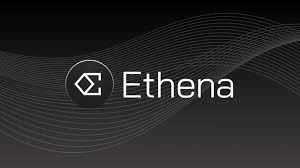In the world of decentralized finance (DeFi), things are moving fast. Elixir, a blockchain project focused on decentralized liquidity, has just launched a synthetic dollar called deUSD. This new token is not just another stablecoin; it’s designed to challenge Ethena’s USDe, a popular synthetic dollar in the market. But why is this important for you, especially if you’re into cryptocurrency and want to build your knowledge in this field? Let’s break it down.
What’s the Big Deal About deUSD?
Elixir’s deUSD is a synthetic dollar—basically, a digital asset meant to stay at a value of $1. These synthetic assets are important because they provide stability in the often volatile world of crypto, offering a bridge between traditional financial systems and DeFi. Elixir promises that their synthetic dollar is “fully decentralized,” meaning it doesn’t rely on centralized exchanges or custodians to maintain its stability.
While USDe, the token from Ethena, also claims to be stable and is backed by crypto assets, it still uses some centralized systems to keep everything running smoothly. This is where Elixir’s deUSD stands out—it aims to be truly decentralized, offering verifiable transparency and a completely non-custodial setup. Simply put, no central party controls it, and everything is open-source for anyone to verify.
Key Features You Need to Know
- Fully Collateralized: Both deUSD and USDe are backed by crypto assets (in this case, stETH, or staked Ethereum). This means that for every deUSD issued, there’s a real crypto asset backing it up. But Elixir’s system aims to keep it “delta-neutral,” which means it protects itself from the fluctuations in the price of Ethereum, ensuring more stability.
- Yield-Generating: Staking deUSD doesn’t just sit there. You can earn additional rewards on top of your investment, which makes it attractive for those looking to maximize their crypto earnings. This could be important if you’re interested in generating passive income from your assets.
- Transparency & Resilience: Elixir claims their system is more resilient than others, especially in market conditions where other stablecoins might struggle. This is crucial because it means deUSD can handle extreme conditions without losing its peg to $1.
Why Should You Care?
Here’s why this is important for you as someone interested in cryptocurrency and blockchain technology:
- Decentralization is Key: In the world of crypto, decentralization is like the backbone of freedom. By using a truly decentralized token like deUSD, you avoid relying on centralized institutions that could potentially fail or manipulate the system. This is a step forward for making crypto more secure and independent.
- Stability in Unstable Markets: Stability in the volatile crypto world is something everyone craves. With deUSD, you can hold a stable asset while still being part of the exciting DeFi ecosystem. This is especially helpful in times when the crypto market takes a downturn, and you want to avoid losing too much value.
- Opportunities for Yield: The ability to earn rewards just for holding and staking deUSD gives you an extra layer of value. You’re not just holding a stablecoin—you’re also potentially growing your assets.
- Innovation in DeFi: Elixir is pushing the boundaries of what’s possible in decentralized finance. By integrating with platforms like Pendle and other DeFi exchanges, it’s offering new ways for you to interact with crypto and gain liquidity in decentralized markets.
The Future of deUSD
Elixir is preparing for a mainnet launch in September, with over $1 billion in liquidity already lined up. This is a massive step toward creating a sustainable decentralized stable asset. The liquidity is backed by real-world assets and supported by popular DeFi platforms, making it a strong contender in the world of synthetic dollars.
Key Terms to Remember:
- Synthetic Dollar: A stable asset designed to maintain a value of $1, often backed by crypto assets.
- Delta-Neutral: A strategy that protects the asset from price fluctuations, ensuring stability.
- Staking: Locking up your crypto to earn rewards, usually through interest or additional tokens.
- Decentralized: A system that doesn’t rely on a central authority to manage operations or maintain value.
- Yield: Earnings generated from an asset, such as interest or staking rewards.
Conclusion
Elixir’s deUSD is setting a new standard for decentralized synthetic dollars in the DeFi space. It challenges the status quo by offering a stable, decentralized, and yield-generating asset, and it has the potential to change the way people interact with stablecoins. By understanding how deUSD works, you’re not only learning about a new crypto asset—you’re gaining insight into the future of decentralized finance and the direction the market is heading.
This kind of knowledge is crucial if you want to stay ahead in the fast-evolving crypto world. Whether you’re looking to diversify your investments or simply want to understand the mechanics behind decentralized finance, keeping an eye on innovations like deUSD can help you build a strong foundation in the space.


